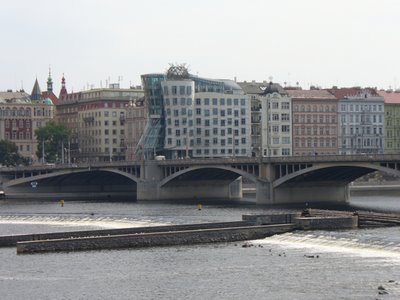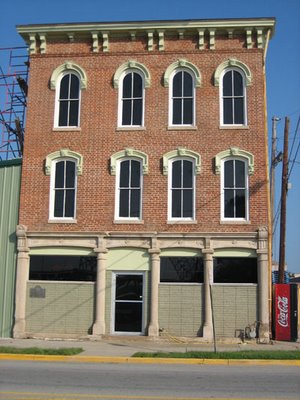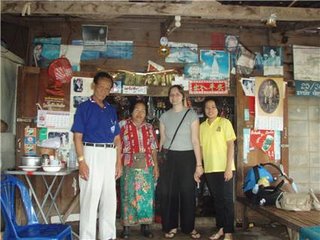Resident Randy Bulleit again brought forth a potential plan addressing a residential parking permit system at last night’s City Council meeting. He’d reportedly been told that it wouldn’t be discussed at a previous Council meeting then heard that it had put on the agenda and introduced as an ordinance.
Having decided to attend last night’s session to discuss the idea with the Council —or to at least avoid missing their discussion-- he was told that he wasn’t on the agenda and that no discussion would take place. Receiving no satisfaction from the Council and being left understandably confused by his interactions with city government thus far, he asked if his parking situation was indeed an appropriate topic for a Council meeting or how he should follow up on the topic. Answer: We’re not sure, but a Council Member will get back to you.
Another ordinance was introduced to deal with the distribution of tax dollars in reference to a state mandated retirement plan for police and firefighters. It passed after a brief discussion but Council Member Dan Coffey voted against it on the grounds that “we don’t know where the money is coming from.”
The Economic Development bond for the YMCA’s portion of the Scribner Place project passed with Council Member Steve Price casting the lone no vote. It was explained in great detail that the bond would solely be the responsibility of the YMCA and the bank providing them credit. The city would incur no risk or fiscal responsibility. Even Coffey was satisfied by the explanation. Price voted against it with no explanation whatsoever.
The kicker of the evening was Council President Jeff Gahan’s proposed ordinance to establish reporting requirements for the Sewer Board, a seeming call for additional accountability via regular financials and additional Council oversight of sewer expenditures. There’d obviously been little discussion amongst Council Members concerning the workings of the ordinance or the sewer department as Council and Sewer Board Member Mark Seabrook immediately objected to specific language in the ordinance that did little to account for emergency repairs, a near constant condition of our long neglected sewer system, particularly with the EPA looming. Gahan then asked several questions, ones that would’ve made sense to ask before introducing an ordinance.
Last night’s meeting, while mostly void of the more vivid floorshows we’ve come to expect, served as a potent reminder to those in attendance that no one on the Council knows what they’re doing or prepares for meetings with answers rather than questions. Not only did they have to pause more than once last night to figure out their own rules of operation but members consistently assumed a posture of general confusion and ignorance broken up only by the usual bouts of innuendo and anger.
Residents aren’t allowed to address the Council concerning issues not on the agenda and issues only make the agenda, often as day-of-meeting additions, as proposed ordinances that have never been discussed, published or otherwise publicly revealed. It’s legislative Russian roulette and the gun is loaded with consequences.
Despite their constant calls for more information and increased accountability, the Council has taken no steps to cure its own inability to function as a responsible working body. State statute clearly defines the role the Council is supposed to play in researching and calculating the impact of potential legislation and they simply don’t do it, even when they sponsor the measure themselves. In fact, after two years of semi-regular Council meeting attendance, I’ve never even heard some of the state-outlined topics discussed at all.
For those curious, I’ve copied the relevant sections of Indiana law below. Fittingly, the sections referenced occur in the codebook immediately preceding information pertaining to the legally required redistricting the Council also chose to ignore. Perhaps I’ll make photocopies.
Anybody have a concise definition of hypocrite I can include?
§ 30.50 STANDING COMMITTEES. There shall be ten standing committees in the Common Council, appointed by the President, which shall consist of three members each, except the Committee on Budget and Finance which shall consist of all the members of the Council; provided that the President shall appoint a chairperson of each committee from its members:
(A) Budget and Finance.
(B) Rules.
(C) Public Utilities and Transportation.
(D) Police Department.
(E) Fire Department.
(F) Public Safety and Traffic.
(G) Public Works.
(H) Public Health and Welfare.
(I) Schools and Library.
(J) Development and Annexation.
('71 Code, §30.25) (Ord. 4600, passed 3-4-57)
§ 30.51 DUTIES OF VARIOUS COMMITTEES. The duties of the various standing committees shall be as follows:
(A) Budget and Finance. Fees, salaries, budgets, appropriations, tax levies, revenue bonds, claims, litigation, contracts, supervision and investigation. The Chairperson shall maintain liaison with City Controller.
(B) Rules. To establish and maintain rules under which Common Council shall operate.
(C) Public Utilities and Transportation. To consider and report on all ordinances affecting the public utilities, electric, gas, water or any public transportation, such as bus, rail, truck, boat or air.
(D) Police Department. To consider and report on all ordinances or resolutions concerning matters pertaining to the Police Department.
(E) Fire Department. To consider and report on all ordinances or resolutions concerning matters pertaining to the Fire Department.
(F) Public Safety and Traffic. To consider and report on all matters pertaining to the flow of traffic, traffic signs and signals, to the regulation of and parking of cars in the city limits. Also, to consider and report on all ordinances and resolutions pertaining to pedestrian traffic and safety and to the general safety of residents of the city.
(G) Public Works. To consider and report on all matters pertaining to streets, alleys, sewers (sanitary and storm), drainage and garbage collections.
(H) Public Health and Welfare. To consider and report on all matters pertaining to the public health and welfare. To maintain close liaison with Floyd-Harrison Health Department and administrator of the Floyd County Memorial Hospital. To consider and report on all ordinances concerning parks and recreation.
(I) Schools and Library. To consider and report on all matters concerning public schools and city library.
(J) Development and Annexation. To consider and report on all matters pertaining to the general development and improvement of the city, to planning and zoning and annexation.
('71 Code, §30.26) (Ord. 4600, passed 3-4-57)
§ 30.52 VOTING ON SUBJECTS INTRODUCED TO COMMITTEES. When a subject is referred to a standing committee or to a special committee, the member introducing the same shall be a member of such committee during its deliberation thereon, but, as such, shall have no right to vote, except if he is already a member of such committee. He shall be notified by the chairperson of the time and place of meeting of such committee.
('71 Code, §30.27) (Ord. 4600, passed 3-4-57)
§ 30.53 REPORTS. All reports from committees shall be made in writing, giving the title and bill number thereof, and must be signed by a majority of the members thereof; and all committees shall return all ordinances, resolutions and papers referred to them and report upon the same to the Common Council not later than the regular meeting night after the same are so referred; provided that the Council may, at its discretion, extend the time for making such report. This section does not include reports from committees created by the Council and containing members of the Council. These reports may be presented orally to the Council upon the request of any Council member, provided that the Council may, at its discretion extend the time for making such report.
('71 Code, §30.28) (Ord. 4600, passed 3-4-57; Am. Ord. G-92-135, passed 12-7-92)
§ 30.54 FORMING COMMITTEE OF THE WHOLE; ORDINANCES COMMITTED; RULES. (A) In forming a Committee of the Whole Council, the Presiding Officer, leaving the chair, shall appoint a Chairperson to preside, unless the Chairperson Pro Tempore of the Council is present, in which case he shall preside.
(B) Ordinances which have been committed to a Committee of the Whole Council shall be read throughout by the City Clerk, and then again read and debated by sections. The body of the ordinances shall not be defaced or interlined, but all amendments, noting the line and page, shall be duly entered by the Clerk upon separate paper, as the same shall be agreed to by the Committee, and so reported to the Council. After report the ordinance shall again be subject to debate on the floor.
(C) The rules of parliamentary law and of proceedings in the Council shall be observed in a Committee of the Whole Council, so far as they may be applicable, except the rule limiting the time of speaking; but no member shall speak more than two times on any question until every member choosing to speak shall have spoken.
('71 Code, §30.40) (Ord. 4600, passed 3-4-57)
 Newcomers, please take note.
Newcomers, please take note.


















